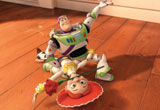
The third film in the Toy Story series may be the last, but it bursts with new characters, sometimes loading dozens of toys and children into a single shot. Animator Simon Allen from Pixar tells how the team met the challenge.From Digital Media World Magazine
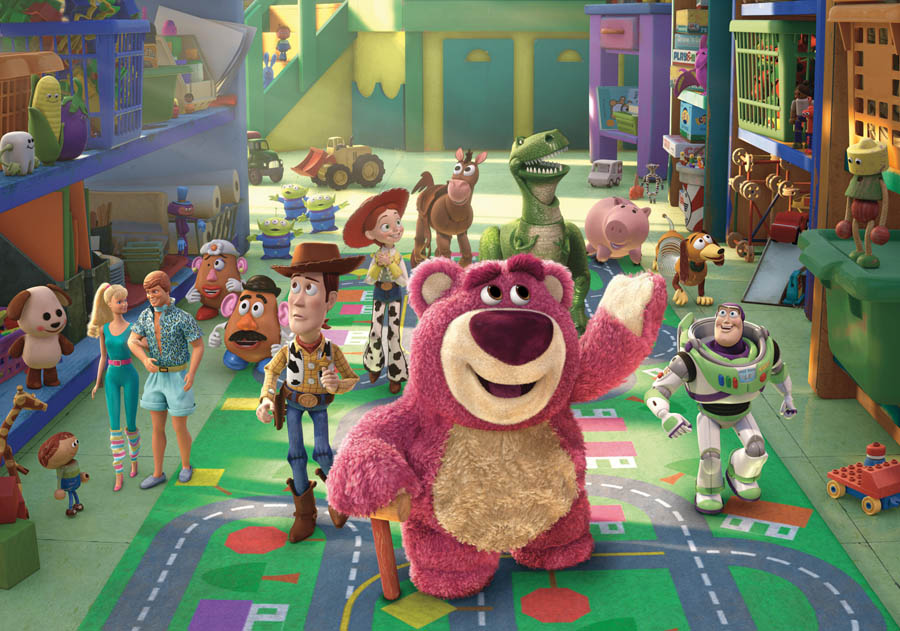 |
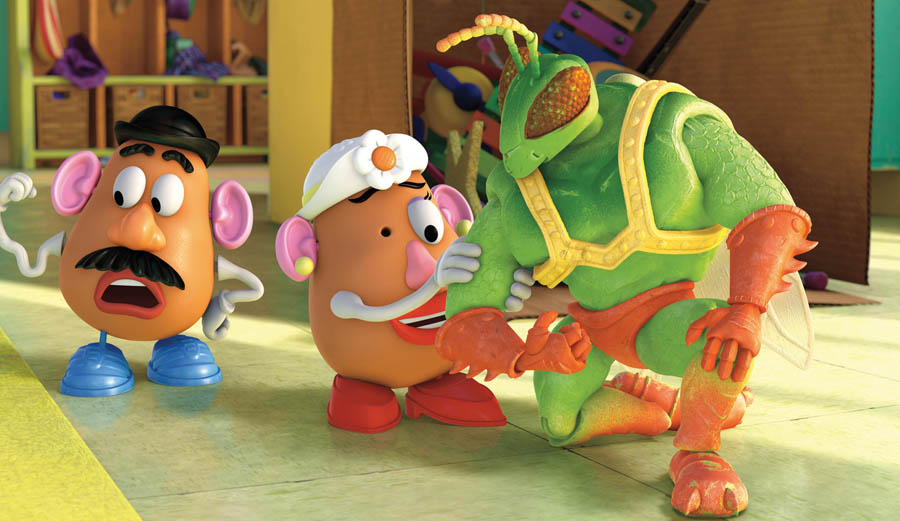 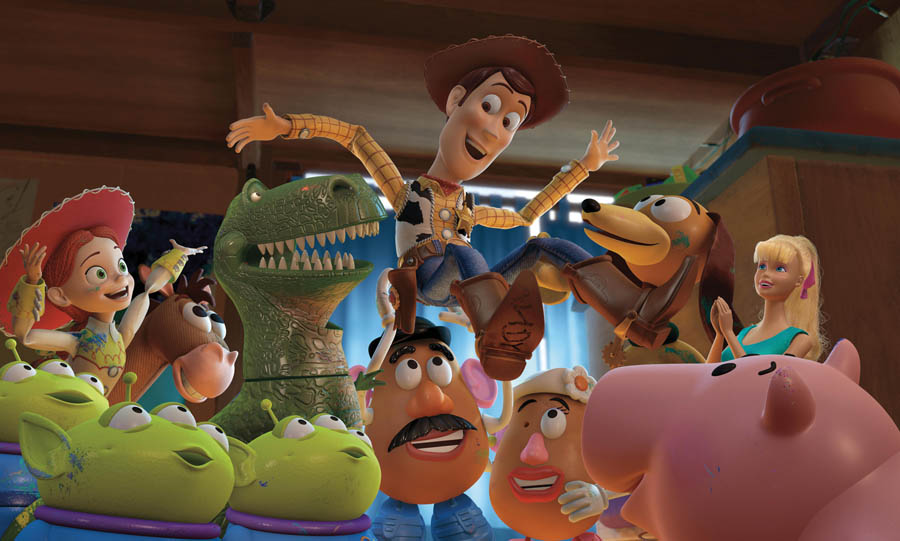 |
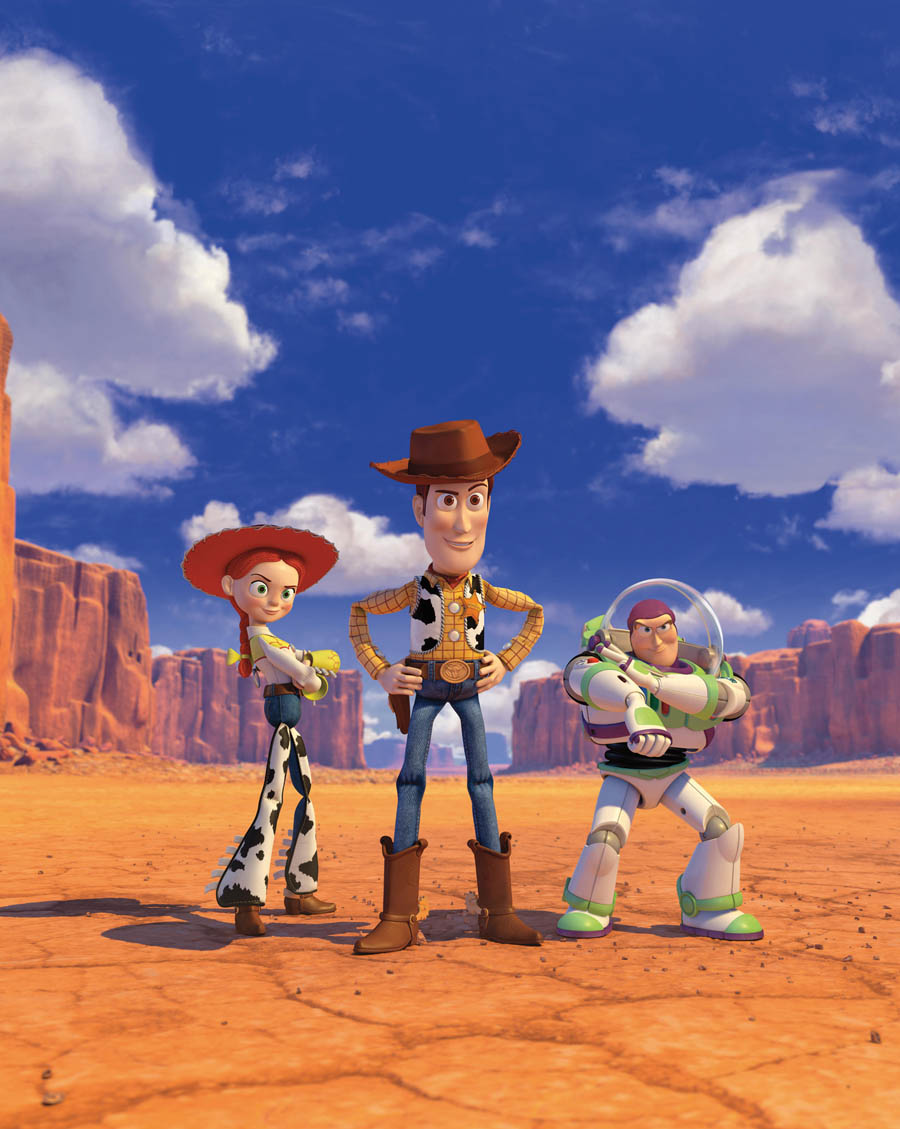 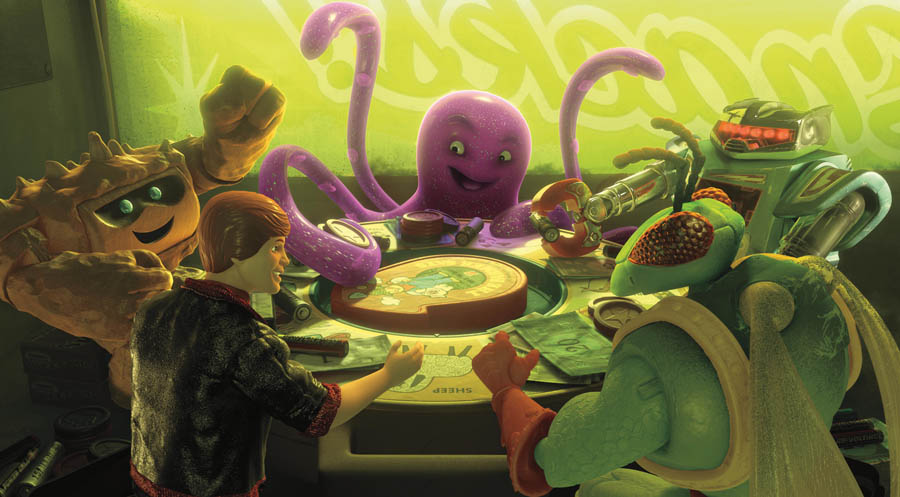 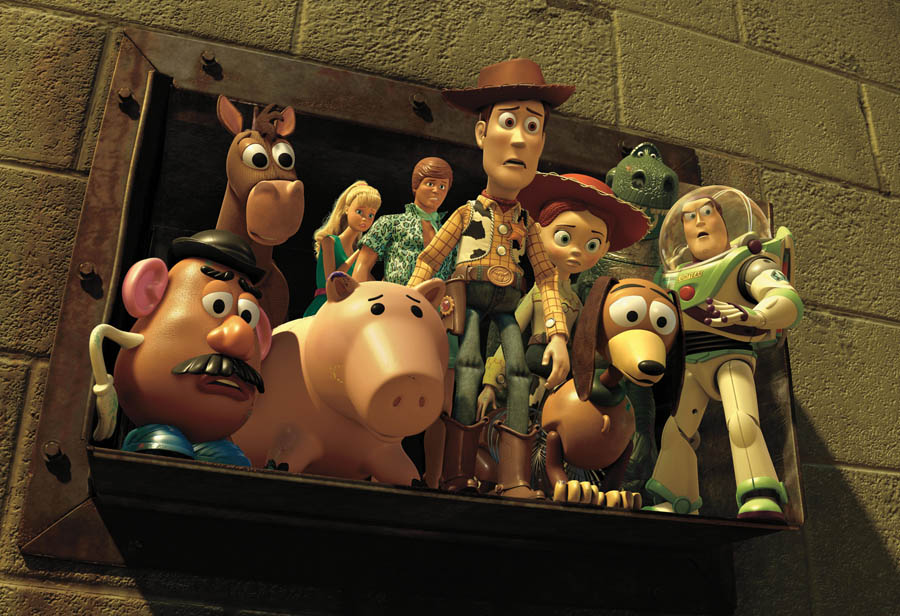 |
| Finding His Feet In the meantime, as well as Lucas Arts, he was fortunate enough to have worked as a VFX artist at Tippett Studios for six years on such films as ‘Starship Troopers’, ‘Hell Boy’, ‘Men in Black2’ and ‘The Matrix’. While his career had started with video games and then visual effects, he had always wanted to work in character animation and was especially drawn to Pixar’s style. His experience with game characters had helped him develop his physical animation skills like running, jumping and climbing, but fell short of the qualities he needed as a character animator, for whom emoting and bringing personality to life are critical skills. On leaving Tippett, he returned to his native Australia to work at Animal Logic in Sydney. He and his wife were expecting their first daughter and wanted to be near family. “Fortunately, ‘Happy Feet’ was the main job going in town, which let me get stuck into character animation on a feature film. Then, on a trip back to the US to fulfill green card obligations, I found my job at Pixar.” Original Characters What attracted Simon to Pixar’s animation was a chance to depart from the typical quick, snappy animated children’s characters on television. He admired the more sympathetic nature of Pixar’s personalities, which he finds have genuine heart and allow the audience to forget that they are watching animated characters. Rather than feeling limited by the previous films, Simon welcomed the chance to use them as key references for his performances. “I must have watched ‘Toy Story 2’ about 50 times anyway – it’s my daughter’s favourite film. Also, this film has over 300 characters in it, which already gave our team ample opportunity to explore new personas and take a few risks on audience reaction.” Sweet Spot The original set of models for the characters that Simon was working on could be resurrected, but only superficially. Animation technology has developed so much during the 11 years between this Toy Story and the last that inside, almost everything had to be re-built, the rigging completely upgraded and the models themselves fine-tuned. Pixar’s animation software itself has basically been remade, which meant they virtually had to rebuild the film from scratch. The programmers are always working with the animators to create and improve the animation tools, and are already working on tools for the next project now. Technical Moment When so many of the toys were all on the screen at the same time, loading 50 or 60 characters into one shot, they had to be extremely conscious of making characters too heavy with controls or creating anything that would slow the process down. Most of the toys were kept very simple with only a handful of controls, which helped them to work with greater numbers. It wasn't so much about the rendering or storage issues. Most of these toys looked different, so it was never a case of being able to animate one character and have that animation copy onto the others. “We had to painstakingly work our way through every character and give each of them their own unique performance, often with six or seven animators working on the same shot, working blind hoping that the characters they were animating weren’t going to walk through someone else's. We would do our best to divide the shot into areas and let each animator work on the characters in that area.” Continuity Huggable Technology The tools the animators use is in John Lasseter and Ed Catmull’s proprietary software, which can generate animated sequences very quickly. Simon described the typical process they follow. “On shots with large numbers of animated characters, the main two or three will be handled by one animator. If there are four or five main characters, they may be divided between a couple of animators while the tertiary background characters will be handled by a small team. “In those extreme cases with lots of characters on screen at once, crowd simulation software is sometimes used to populate the shots. Finally, the animators combine the performances and get them working together the way they want them to play out. Then the scenes are handed off to the TDs to light, shade and render.” Alter Ego The depth of an animator’s performance skills are perhaps best demonstrated by a character like Buzz who, in this movie, gains a new persona or alter ego when a button on his body is accidently pushed, activating his ‘Spanish mode’ and releasing a passionate, romantic Buzz not only fluent in charming Spanish but fully expert in flamenco dancing. Pasa Doble As their main reference, two professional dancers from ‘Dancing with the Stars’ choreographed the Pasa Doble for the team and performed the dance for them at the Pixar offices, where the animators got to spend a day working with them to try out the moves. All of this reference and experience the dancers shared with them went directly into the character animation to create this new, romantic Buzz. Simon explained that when animating the toys, the animation style goes back to the more traditional, exaggerated style. For these characters, Simon didn’t only use the film footage itself from the previous films but also some of the animators from those films gave lectures to demonstrate to the crews about animation style, motions and personality. These sessions were recorded and referred to frequently during the animation process. Having never worked on any ‘Toy Story’ characters before, Simon found them invaluable. True Blue “I found him to be, in fact, a multilayered character,” Simon said. “He has some amusing identity issues, utterly convinced to his core that he IS a space ranger – similar I suppose to the Ken character who cannot escape his self-image as the stylish, macho man. Buzz is also an incredibly loyal friend to Woody, and in this film, gets to reveal a passionate side as well.” Simon talked about making the software tools work the way an animator thinks about his craft. “We allow the audience time to read the expression on our characters’ faces. We show that Woody is thinking, for example, by adding an eye dart and subtle brow shapes to convey emotion or inner monologue. We make him inhale and exhale to give the impression of breathing, but it's more than just making a character move. To make the audience believe that a living, thinking and emotional character is up there on the screen, we have to make them move in a way that resonates with the audience. “By giving the audience that information earlier and letting them anticipate how this situation will be resolved, making the unexpected happen keeps the audience guessing. ‘How are they going to change him back? Is he going to stay like that forever?’ Staging Ideas “This becomes more important than making them move. We add what is called ‘keep alive’ to that pose - very subtle amounts of motion, like a blink or breathing, or even a small weight shift or slight hand move but nothing great so the audience doesn't become distracted or confused about what to look at. The choreography for these shots is specific and, again, comes down to the staging of ideas and making sure the audience looks at what's important in the shot. As I look back on some of my earlier shots from when I was younger, I see that I've put too much motion into my animation in places. I wish I could go back and strip out some of the extraneous motion, and just keep it simple so it's not so distracting. “All animators learn that less is more, and that it's more about design and idea than moving something for the sake of motion. I remember a meeting with Pete Doctor while we were making ‘Up’ when he commented on my animation, saying, ‘If I see it, then it's too much, but if I can feel it then it's just right.’” Among Pioneers Throughout the production, Simon was aware of becoming a part of Pixar’s pioneering role in computer animation, starting with ‘Toy Story 1’, the first fully computer animated feature film and Pixar’s first movie. “Working with director and story editor Lee Unkrich and his animation supervisors was delightful and I feel very fortunate especially to have played those original characters, too. Of course, capturing my two daughters in some of the children’s characters was another treat for me." |
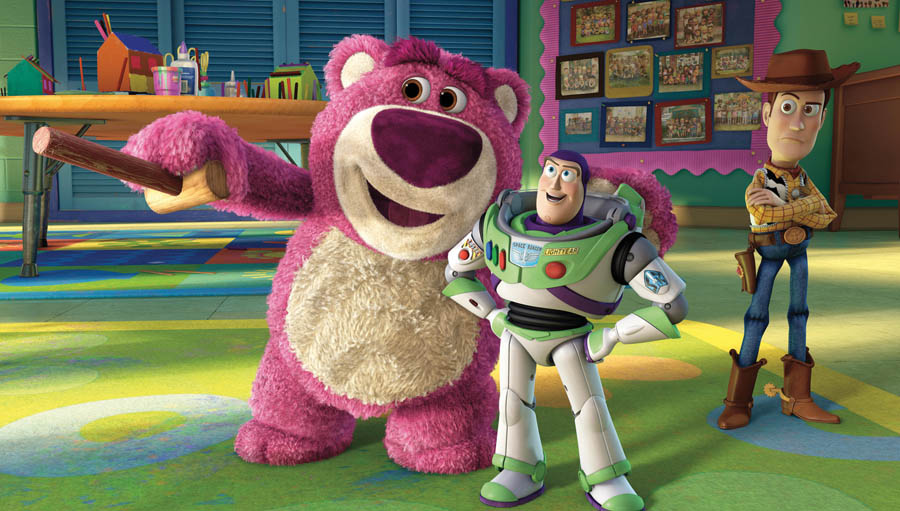 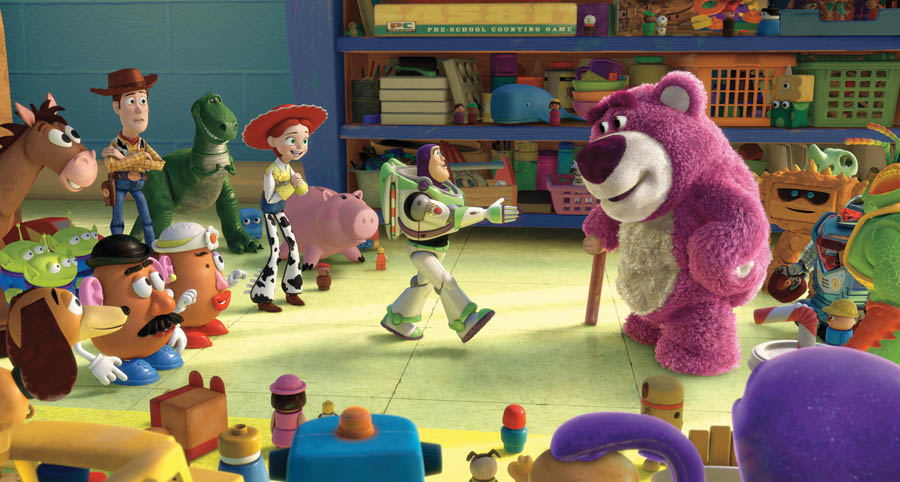 |
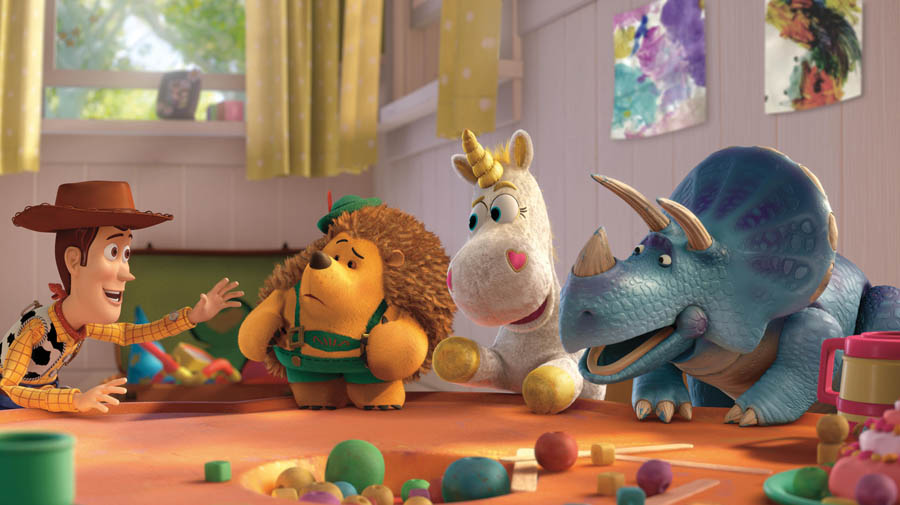 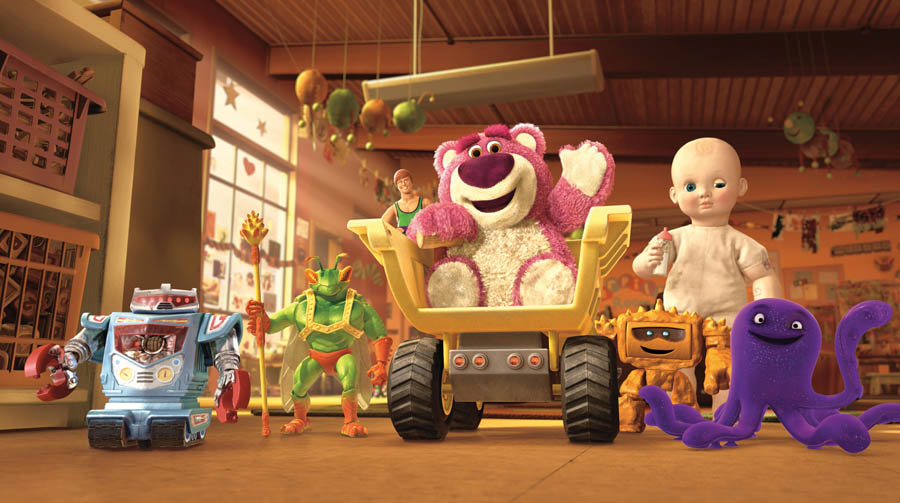 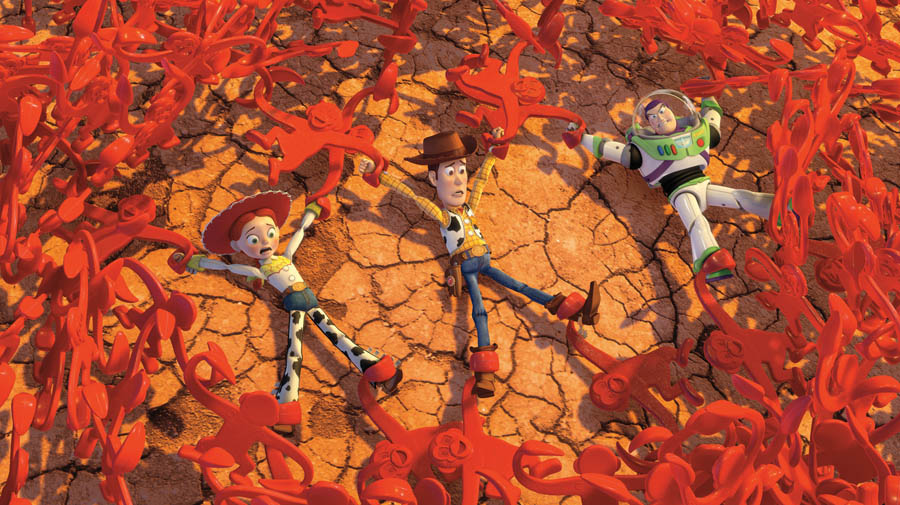 |
| Bigger Than Ben Hur A sequence in the film that we called ‘Warm Welcome’, in which all of Andy’s toys meet Lotso and the Sunnyside toys for the first time, was the Ben Hur of the film for us,” said Simon. “It was huge in scale with nearly 100 characters that had to be animated in 67 shots. It was a scene in the film that frightened everyone so, rather than put it off and animate it later in production, we decided to get it out of the way very early on and tried a different approach. “Our Animation Supervisors Bobby Podesta and Mike Venturini decided that we should attack this sequence and finish it in nine days. It was going to be painful but if we could just work through it all fast enough, maybe it wouldn’t hurt so much. Everyone stopped what they working on, each grabbed a shot and put their heads down and went crazy for nine days straight. I would have to say it was one of the most challenging but one of the most enjoyable moments on the film because everyone came together and did an amazing job.” When the supervisors told production that the plan was to have this behemoth of a sequence finished that quickly, Simon didn’t think they really believed that it could be done. But they agreed and did everything they could to help, including the director Lee Unkrich, who rapidly finalled the shots. “Mike compared it to a bar brawl. You animate the hell out of a character and then turn around and ask for another, then beat that one up and swing around and do another until you’re done. We managed to turn it into a bit of a party, having ice creams to help make the work seem sweeter. We did it in nine exhausting days and I think my shot was the last one finished. At the end we were so proud of everyone for working so hard and fast and still being able to create beautiful art.” |
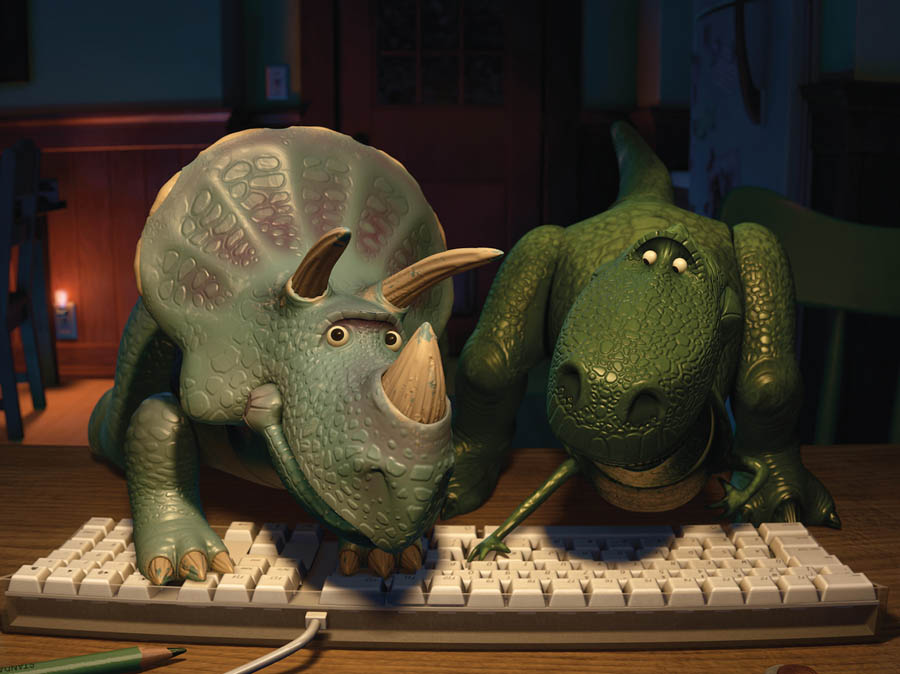 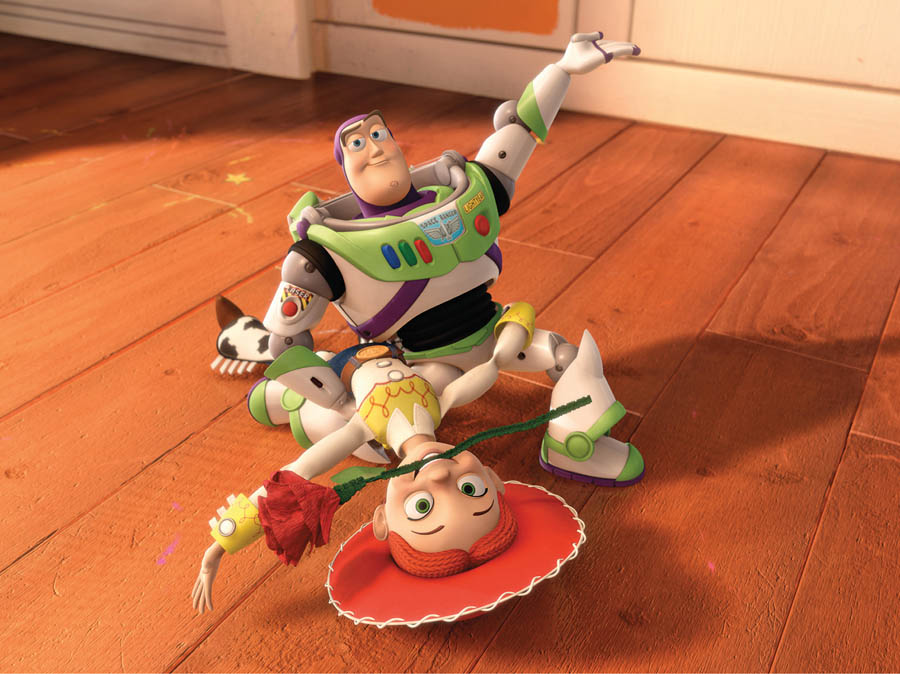 |
| Controlling Complexity “Physical complexity of the different characters in terms of controls really depends on how expressive and dexterous they need to be. Some of the characters have incredibly complex armatures that we articulate to create motion or expression for the acting, while others have very few controls due to the requirements of their performance, Simon said. “Rex and Ham, for example, have very few controls to work with because we need these characters to stay true to their material and look like they're made out of strong plastic. “They are built to be less pliable and have a simple range of motion, and also have fewer controls in the face, which sometimes can be challenging when trying to convey a certain emotion. Compare that to a character like Jessie who is very dexterous and has an extremely expressive face with a flexible hat that has to be posed as well. These traits mean the animators have hundreds of controls to manage. “It's nice every once and a while to have that shot with a character with very few controls, because you can create animation extremely quickly. In contrast, those extremely difficult shots that really frighten animators may have a number of characters with extremely complex armatures that require due diligence to create appealing performances.” |
| Words: Adriene Hurst with Simon Allen images: courtesy of pixar animation/walt disney studios Featured in Digital Media World. Subscribe to the print edition of the magazine and receive the full story with all the images delivered to you.Only$79 per year. |


















